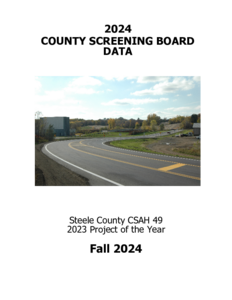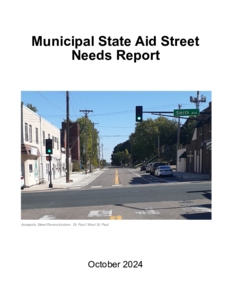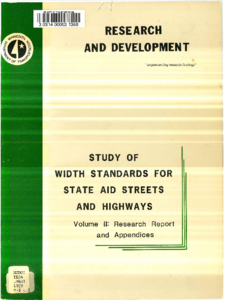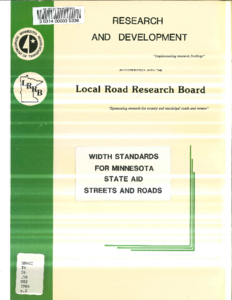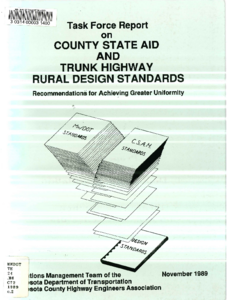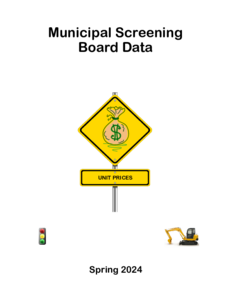Width Standards for Minnesota State Aid Streets and Roads
Date Created
1985-07
Description
Task Force report on County State Aid and Trunk Highway Rural Design Standards: Recommendations for Achieving Greater Uniformity
Date Created
1989-11
Description

